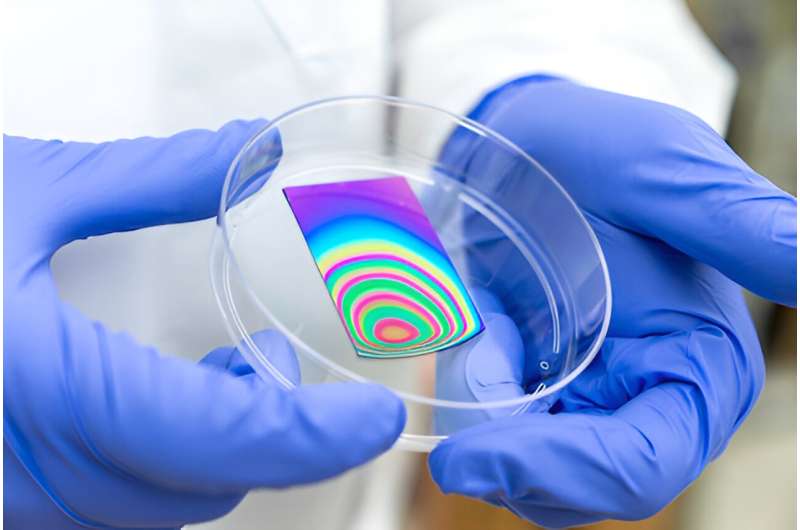Rice University materials scientists developed a fast, low-cost, scalable method to make covalent organic frameworks (COFs), a class of crystalline polymers whose tunable molecular structure, large surface area and porosity could be useful in energy applications, semiconductor devices, sensors, filtration systems and drug delivery.
“What makes these structures so special is that they are polymers but they arrange themselves in an ordered, repeating structure that makes it a crystal,” said Jeremy Daum, a Rice doctoral student and lead author of a study published in ACS Nano. “These structures look a bit like chicken wire—they’re hexagonal lattices that repeat themselves on a two-dimensional plane, and then they stack on top of themselves, and that’s how you get a layered 2D material.”
Alec Ajnsztajn, a Rice doctoral alumnus and the study’s other lead author, said the synthesis technique makes it possible to produce ordered 2D crystalline COFs in record time using vapor deposition.
“A lot of times when you make COFs through solution processing, there’s no alignment on the film,” Ajnsztajn said. “This synthesis technique allows us to control the sheet orientation, ensuring that pores are aligned, which is what you want if you’re creating a membrane.”
The ability to control pore size is useful in separators, where COFs could serve as membranes for desalination and potentially help replace energy intensive processes like distillation. In electronics, COFs could be used as battery separators and organic transistors.
“COFs have the potential to be useful in a variety of catalytic processes ⎯ you might, for instance, use COFs to break down carbon dioxide into useful chemicals like ethylene and formic acid,” Daum said.
One of the hurdles preventing COFs from being used more widely is that production methods involving solution processing are lengthier and more difficult to accommodate in industrial settings.
“It can take three to five days of reaction time to produce the powders for the solutions needed to generate COFs,” Ajnsztajn said. “Our method is much faster. After months of optimizing, we managed to produce high-quality films in just 20 minutes or less.”
To make sure their films exhibited the right molecular structure, Daum and Ajnsztajn went to the Argonne National Laboratory, where they analyzed their samples using the Advanced Photon Source, working continuously in shifts for 71 hours.
“We knew it was ‘go’ time, but we were so happy with the results,” Daum said. “We had to go to a national lab because this technique was the only way to measure the quality of our films and ensure we’d taken the right measures to optimize them.”
Microscopy studies provided insight into how COF crystals grow and helped show that temperatures of up to 340°C (~644°F) could be used to synthesize organic molecules.
“While working on this project, we’ve heard from many people who thought that heating organic molecules up to such high temperatures would prevent the right reactions from occurring, but what we found is that chemical vapor deposition is, in fact, a viable way to create organic materials,” Ajnsztajn said.
To make the COFs, Daum and Ajnsztajn built an ad-hoc reactor from discarded lab equipment parts and other inexpensive, readily available materials.
“This entire process was something that was very cheap to assemble,” Daum said. “Establishing a robust, scalable process of producing a variety of COF films will hopefully allow for the better application of COFs in catalysis, energy storage, membranes and more.”


